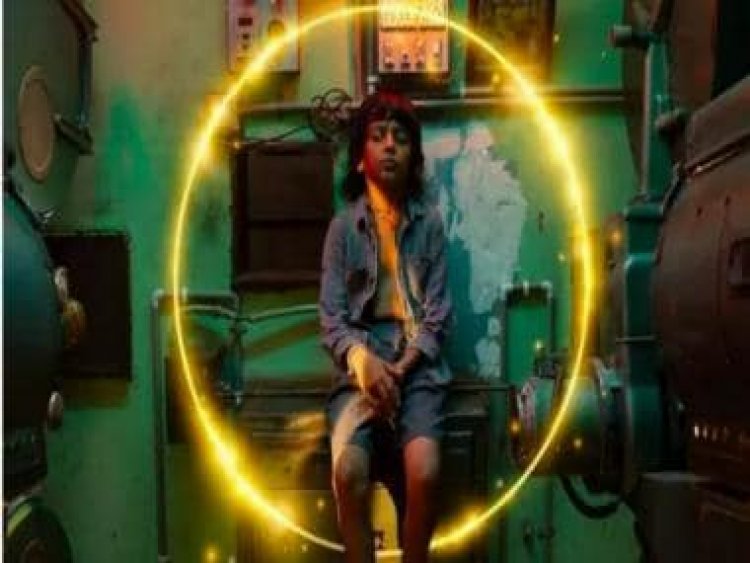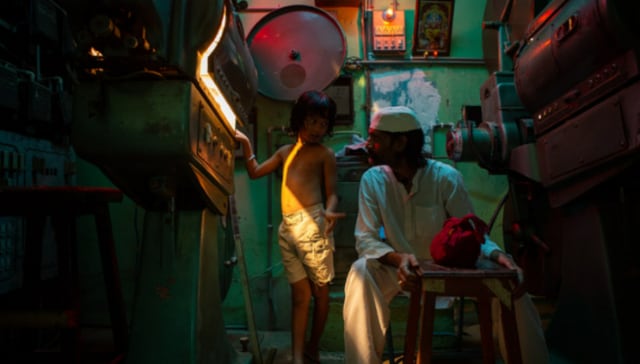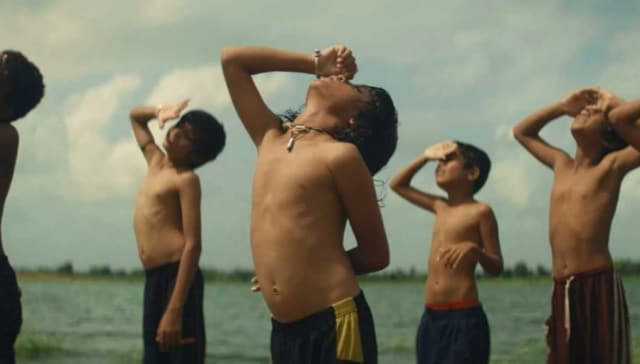Last Film Show (Chhello Show) movie review: Bitter-sweet though somewhat slim ode to cinema
Last Film Show (Chhello Show) movie review: Bitter-sweet though somewhat slim ode to cinema

Language: Gujarati
Cast: Bhavin Rabari, Dipen Raval, Bhavesh Shrimali, Richa Meena
Director: Pan Nalin
Star rating: 3/5
A little boy with a passion for cinema befriends the projectionist at a small-town theatre – narrate this theme to cinephiles across the globe in a game of Guess The Movie and chances are, the most common answer will be the Italian classic Cinema Paradiso. This though is a precis of writer-director Pan Nalin’s Gujarati film Chhello Show a.k.a. Last Film Show that releases in Indian theatres today, just weeks after the announcement that it will be India’s entry in the race for next year’s Best International Feature Film Oscar. Nalin has said that Chhello Show is considerably autobiographical. Unfortunately for him, the story of his childhood bears a strong enough resemblance to the basic premise of Guiseppe Tornatore’s coming-of-age drama – one of the most beautiful ever made – for it to be dwarfed by the memory of that film. A pity, because Chhello Show, despite the comparative slimness of its content, is sweet, funny and moving in its own way.
Chhello Show is set in Chalala, a non-descript town in Gujarat where our protagonist Samay (Bhavin Rabari) leads a humdrum life, attending school and selling tea from his father’s stall on a railway platform. Nothing much happens in this dull place. The monotony is broken for Samay only when he plays hooky and visits a movie hall called Galaxy in the vicinity. There he meets the lively Fazal (Bhavesh Shrimali), who runs Galaxy’s projection room.
Samay is so entranced by the magic of cinema that he begins to conceptualise ways to replicate what he sees on screen. What starts off as a relationship of mutual opportunism between Samay and Fazal gradually turns into a deep friendship that has a life-altering impact on the child.

There is a charm in imagining young Nalin all agog while watching moving images in a crumbling hall in a remote corner of his home state, and growing up to become a respected director. The choice of name for his character in Chhello Show is a quiet nod to storytellers capturing moments in time to transport audiences to the past or occasionally, onward to a future that is yet to happen in the real world; in a larger sense, samay (the word for time in more than one Indian language) indicates the eternality of art even while technology marches forward.
Two motifs are used in Chhello Show to exemplify both the vagaries and the promise held out by the passing of time: theatres and trains. The theatre is the central image also in two other lovely Indian independent films that have been earning critical acclaim on the festival circuit in the past year: Aditya Vikram Sengupta’s Once Upon A Time In Calcutta (Bengali) and Faraz Ali’s Shoebox (Hindi).
In all three films, a decaying cinema complex is a link to a dying past. A theatre in any such story is potentially a symbol of life, death, regeneration and/or evolution, and emblematic of two kinds of human beings: those who are willing to evolve and those who refuse to or are incapable of keeping up. In Tornatore’s film, the titular theatre is finally demolished but Toto, the little boy who fell in love with the medium and learnt within those walls, goes on to become an important filmmaker – the physical structure, literally, came down, but the art form lived on. Back then, the tussle was between the big screen and the advent of video, then it moved on to celluloid vs the digital, and here we are today, debating whether streaming platforms will finish theatres. The one thing that has remained through all this is cinema itself.
(Minor spoilers in this paragraph) Galaxy too is pulled down and its equipment recycled, but Samay sets off almost immediately on his journey towards becoming the director we now know as Pan Nalin. In a ruminative passage in Chhello Show, a deadpan Samay watches the projector and film reels from Galaxy being broken down in factories and ultimately turned into spoons and plastic bangles. The functionality of the spoon is a colossal contrast to the romance of the theatre that has engulfed the screen until then, but it fails to kill Samay’s own love affair. Instead, he begins to associate colourful bangles with those whose great cinematic works he knows – this makes for a poignant section in Chhello Show, even though it gets a bit unsubtle when the boy’s voice reciting a litany of famous names at the sight of women’s ornaments gives way to an adult voiceover. (Spoiler alert ends)
On a parallel track, Chalala becomes embroiled in the narrow-gauge-vs-broad-gauge, steam-vs-electric-engines revolution in railways. The town’s economy is linked to its train station, as is Samay’s family’s livelihood. Chhello Show is as much about Samay’s growing up as it is about whether or not his caste-minded father (an excellent Dipen Raval) will.
Chhello Show aims to portray the social landscape of Chalala and Samay’s home, as much as his internal travels.

In a decade when India’s most high-profile film industry, Hindi a.k.a. Bollywood, has been increasingly stereotyping Muslims, it is nice to see a major Muslim character written into this script without a noise being made about his religious identity. Samay’s friends are a hilarious, appealing bunch to the extent that we get to know them, but none of them is clearly defined. The only characters who are explored in Chhello Show with depth are Fazal, Samay himself and his father. In fact, the latter’s realisation of the extent of his son’s passion for cinema comes in one of the film’s warmest, most meditative scenes.
Samay’s sister is adorable, but nothing more than a sketchy figure in the background of his life, while his mother (Richa Meena) is memorable only for her fragile prettiness and Swapnil S. Sonawane’s delicious camerawork employed to shoot her while she is cooking. The aroma of the food almost wafts off-screen as the sight of her at work – the spices she uses, the techniques, the vessels, the boiling oil, the packing – are captured in loving detail. She though, is not. This contributes to the film’s occasional insubstantial feel.
Like the Hollywood film The White Tiger, based on the Indian book of the same name, Chhello Show too takes a seemingly benign yet decidedly upper-caste view of the caste system. (Spoiler alert) Samay’s father believes that cinema will pollute his son’s Brahminhood. Another character though says that there are only two castes in present-day India: those who know English and those who do not. There is no counter offered to this comment, and it mirrors Samay’s own contempt for his father’s pride in his caste superiority despite his financial downfall. This therefore comes across as the film’s own stand on caste, which conveniently glosses over the continuing atrocities against India’s lower castes, the extreme violence and discrimination, while privileged castes falsely insist that caste and class are interchangeable in today’s India.
Samay is loveable, and Bhavin Rabari – a fine young talent – plays him in a carefully measured tone that rarely allows the tiny boy’s intelligent, endearingly child-like impertinence to spill over into annoying precociousness. There are two instances when a line is crossed, and that is more the fault of the dialogue writing than the acting: when he gives Fazal an uncharacteristically adult explanation for why he is named Samay, and elsewhere when he chides his father for his caste beliefs. The latter comes across less as what Samay, with his limited exposure, might have said than what Nalin later thought.
That said, Nalin, along with cinematographer Swapnil S. Sonawane and music director Cyril Morin have managed to paint an enticing portrait of Chalala, childhood and the transformative nature of cinema in this little indie that tempts the viewer to look past its weaknesses.
Since the selection of Chhello Show as India’s entry for the Oscars, there has been a raging debate about whether RRR (Telugu) was not the more appropriate choice. The answer would require a separate article, but even when viewed without the shadow of this battle falling on it, there is a larger shadow Chhello Show must contend with. There are those who say that comparisons are odious, but it is not the duty or responsibility of the viewer to steer clear of them – if a film is effective, it will push thoughts of other films out of the mind. While watching Chhello Show though, it is hard not to think of that giant that precedes it. Cinema Paradiso was a landmark in global cinema, and a soul-stirring, heart-wrenching experience. Chhello Show is slender in comparison, but works all the same as an enchanting, bitter-sweet reminiscence.
Rating: 3 (out of 5 stars)
Chhello Show is now in theatres.
Anna M.M. Vetticad is an award-winning journalist and author of The Adventures of an Intrepid Film Critic. She specialises in the intersection of cinema with feminist and other socio-political concerns. Twitter: @annavetticad, Instagram: @annammvetticad, Facebook: AnnaMMVetticadOfficial
Read all the Latest News, Trending News, Cricket News, Bollywood News, India News and Entertainment News here. Follow us on Facebook, Twitter and Instagram.
What's Your Reaction?


























































